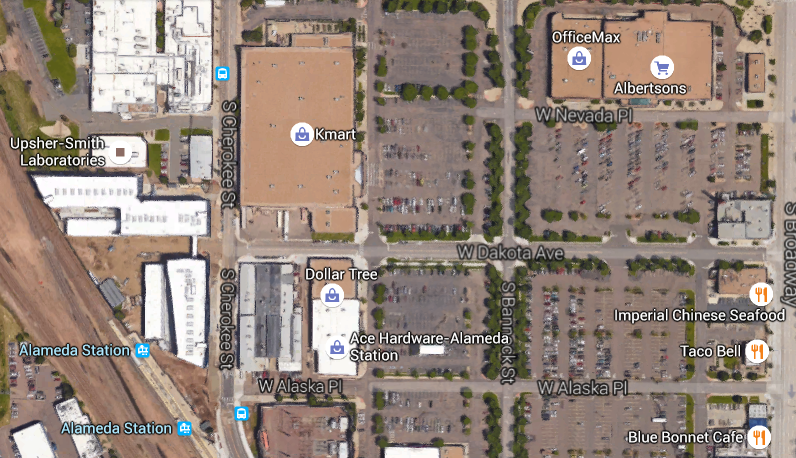RTD Needs to Raise Its Game on Transit-Oriented Development

If you build good transit, it will serve a lot more people if you also build walkable places around the stations. Without that development, your transit system won’t ever reach its potential.
When it comes to making effective use of the land by its stations, RTD has some catching up to do, according to initial results from an audit commissioned by the agency [PDF].
The report authors says that RTD’s efforts to encourage transit-oriented development (TOD) are hampered by inefficiencies inside the agency. RTD’s transit-oriented development team needs a clearer mandate and more resources, and the agency’s protocols for handling development need to be streamlined in order to build projects effectively.
RTD plays a crucial role in shaping development because it owns parcels around its stations. But internally, the agency’s decision-making process is a bit of mess, with a tangle of different departments wielding authority over TOD projects and policy, according to the report. When there’s conflict between, say, rail operations people and development people inside RTD about whether a parcel should be sold to developers and built on, it can take a long time to resolve.
Delays cause uncertainty, and uncertainty may cause developers to balk at building walkable places near transit. At an RTD board meeting Tuesday, Director Kent Bagley said that won’t cut it.
“Time kills real estate deals,” said Bagley, an urban planner who runs a real estate consultancy. “Those of us that are in the real estate arena, or have been, understand that. So time is a big, big issue, and anything that we can do to facilitate not taking vast amounts of extra time is critical.”
The issue of how RTD handles its land will gain urgency as the agency prepares to open four new rail lines next year. “We are building out FasTracks and all of us could be changing the very face of the Denver metro area,” said Director Judy Lubow. “It is gonna change, the question is can we help it along.”
Bagley and Lubow seem to get it, but Director Tina Francone, who along with colleague Natalie Menten doesn’t want transit to change her rural community, was not in favor of reorienting RTD to make better use of its land. “We’re not in the business of land development,” Francone said. “We’re in the business of moving people from point A to point B.”
But there’s not as much daylight between transportation and land use policy as Francone seems to think. Making the areas around transit stations walkable and bikeable makes rail a more attractive option, reduces dependence on cars, and will increase RTD ridership.
There’s an opportunity now to take advantage of the hot real estate market, but it won’t last forever. “I would challenge the staff to be maybe more aggressive to some extent,” Bagley said. “Because this whole issue of TOD — this market can change on a dime… so my suggestion is don’t be timid.”


